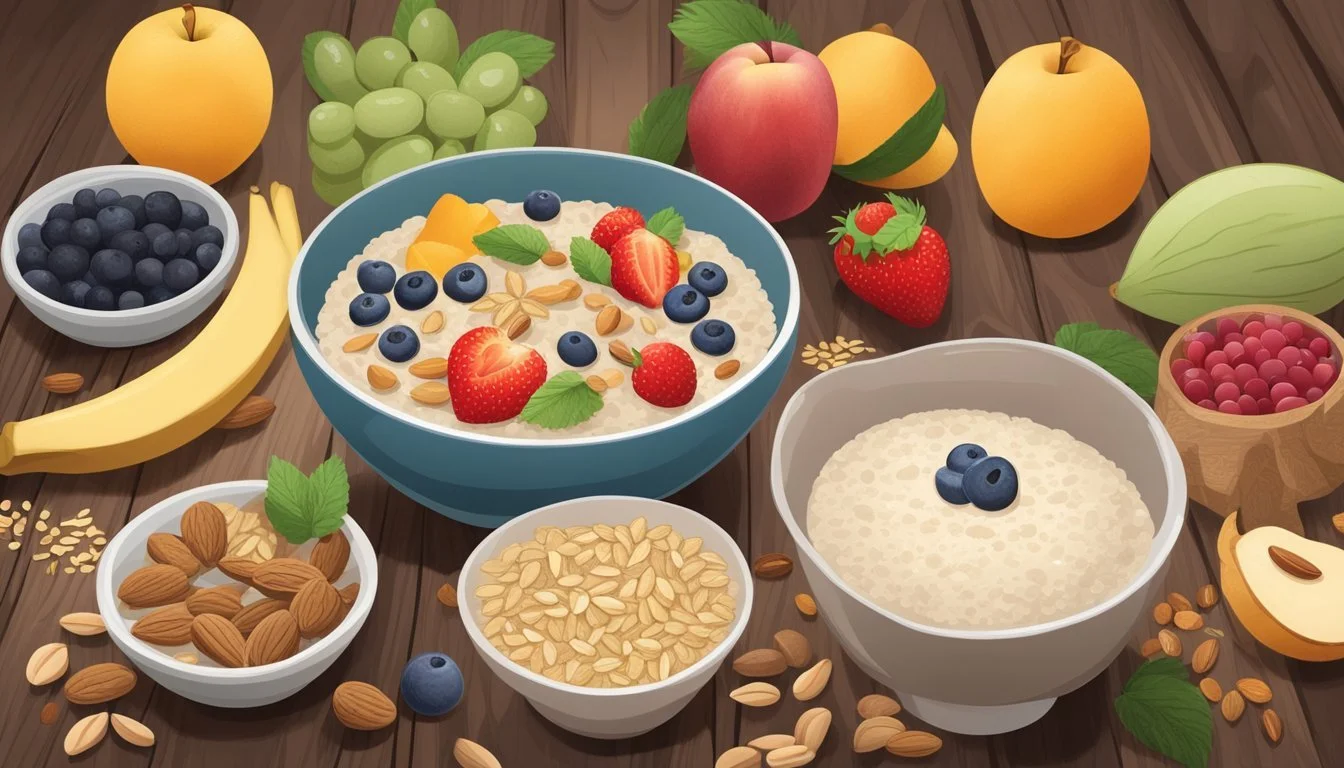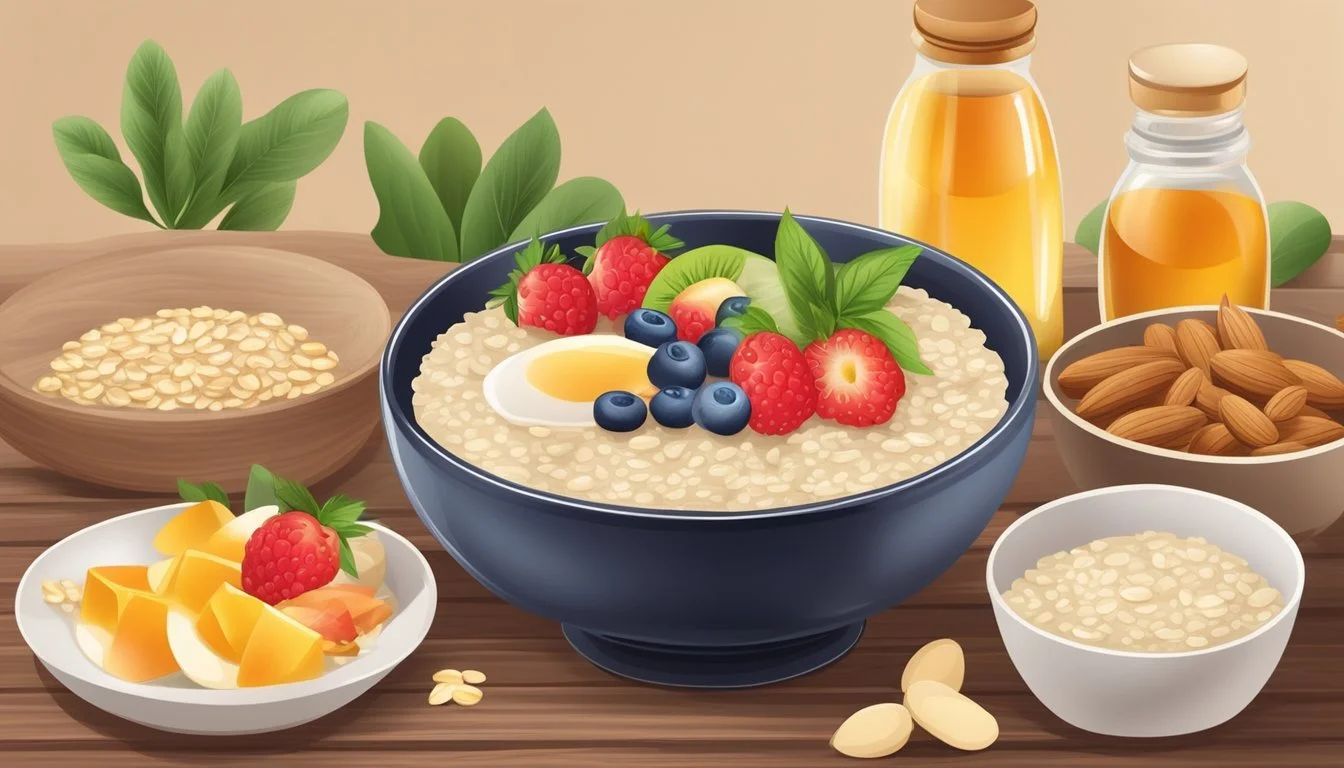Is Porridge Gluten-Free?
Understanding Grain Choices and Gluten Content
Porridge is a warm breakfast staple enjoyed across the globe, often praised for its comforting qualities and nutritional benefits. The primary ingredient in traditional porridge is oats, which are naturally gluten-free. This characteristic makes porridge an appealing breakfast option for those managing celiac disease or adhering to a gluten-free diet. However, the gluten-free status of porridge is not solely dependent on the oats themselves but also on how they are processed and prepared.
While oats inherently do not contain gluten, they are frequently cultivated, harvested, and processed alongside wheat, barley, and rye, which do contain gluten. This proximity raises the risk of cross-contamination, resulting in oats that may no longer be safe for individuals with gluten sensitivities or celiac disease. Therefore, to ensure porridge is gluten-free, it is crucial that the oats used are not only pure but also processed in a gluten-free facility.
For consumers on a strict gluten-free diet, purchasing oats and oatmeal products labeled and certified as gluten-free is the most reliable way to enjoy porridge without the concerns of potential gluten exposure. They can trust that these products have undergone stringent testing to meet the required standards, which ensures safety and peace of mind during consumption.
What is Porridge?
Porridge is a traditional breakfast dish made by boiling ground, crushed, or chopped starchy plants—typically grain—in water or milk. Its consistency varies from thick and creamy to a more fluid soup-like version.
Defining Porridge
Porridge, in its most basic form, is a hot cereal that can be made from a variety of grains such as oats, millet, rice, or cornmeal. It is a nourishing meal that can be prepared with either water or milk, providing a versatile base for both sweet and savory toppings.
Common Ingredients in Porridge
Common grains used in porridge include:
Oats: Often preferred for their creamy texture and health benefits.
Rice: Used in dishes like congee, creating a smooth, easily digestible porridge.
Millet: A gluten-free option that yields a nuttier flavor.
Buckwheat: Another gluten-free alternative, known for its hearty taste.
Quinoa and Amaranth: Nutrient-dense grains that offer a protein boost.
Additional ingredients often mixed into porridge for enhanced flavor and nutrition include fruits, cream, protein powders, and various sweeteners.
Porridge Around the World
Different cultures have their own versions of porridge, showcasing local grains and ingredients:
Oatmeal: Predominantly found in Britain and North America, made with rolled or steel-cut oats.
Congee: An Asian rice porridge that is soft and often served with savory garnishes.
Polenta: An Italian porridge traditionally made with ground yellow cornmeal.
Rice Flakes Porridge: A variation using rice flakes, which is common in various parts of the world, catering to those who are gluten-intolerant.
Gluten and Its Impact
The section delves into the nature of gluten and its presence in various grains, focusing on their impact on individuals with gluten-related disorders.
Understanding Gluten
Gluten is a group of proteins found in certain grains such as wheat, barley, and rye. It's known for providing elasticity and a chewy texture to baked goods. For most people, gluten can be consumed without issues. However, it poses serious health risks for individuals with celiac disease, an autoimmune disorder where the ingestion of gluten leads to damage in the small intestine. A gluten-led immune response also triggers gluten allergies and non-celiac gluten sensitivity, presenting various symptoms.
Gluten Content in Grains
Grain Gluten Content Wheat Contains gluten Barley Contains gluten Rye Contains gluten Oatmeal May contain gluten due to cross-contamination* Buckwheat Gluten-free Quinoa Gluten-free Millet Gluten-free
Oats naturally do not contain gluten but are often processed in facilities that also handle gluten-containing grains, leading to cross-contamination. Buckwheat, despite its name, is not related to wheat and is safe for gluten-free diets. Quinoa and millet are also naturally gluten-free grains and offer alternative options for those requiring gluten-free diets.
Porridge and a Gluten-Free Diet
For individuals with celiac disease or gluten sensitivity, identifying gluten-free grains is crucial to enjoying porridge without health risks. Preparing a safe gluten-free porridge requires awareness of cross-contamination issues, from selection of ingredients to cooking practices.
Identifying Gluten-Free Grains
When adhering to a gluten-free diet, grains like buckwheat, quinoa, millet, and amaranth are safe choices. Despite their names, buckwheat and quinoa are not wheat-based and do not contain gluten. Millet and amaranth are often appreciated for their high protein and fiber content as well as their versatility in recipes.
Safe Grains for Gluten-Free Porridge:
Buckwheat
Quinoa
Millet
Amaranth
Preparing Gluten-Free Porridge
Creating gluten-free porridge involves choosing gluten-free grains and combining them with liquids such as water, rice milk, or non-dairy milks like almond or coconut milk. While oat porridge is popular, one must ensure the oats are labeled gluten-free to avoid gluten cross-contamination. A typical recipe may involve simmering these ingredients in a bowl, often enhanced with toppings of fruit, nuts, or sweeteners.
Example Recipe:
1 cup of gluten-free oats or other gluten-free grain
2 cups of liquid (water, rice milk, non-dairy milk)
Combine in a pot and simmer until desired consistency
Serve in a bowl with toppings of choice
Cross-Contamination Concerns
Cross-contamination is a significant risk in preparing gluten-free foods. It can occur at any point from farm to bowl, especially if facilities process both gluten-containing and gluten-free products. To minimize risk, purchase grains labeled as gluten-free, and verify that they are processed in a dedicated gluten-free facility. Using separate cooking utensils and storage containers is also advisable to ensure that gluten does not contaminate gluten-free ingredients.
Preventing Cross-Contamination:
Use gluten-free labeled grains
Confirm processing in gluten-free facilities
Keep separate cooking and storage items for gluten-free foods
Health Benefits of Gluten-Free Porridge
Gluten-free porridge can be a nutritious breakfast choice for those looking to maintain a balanced diet. It often contains a higher nutrient profile compared to its gluten-containing counterparts, providing essential vitamins, minerals, and other nutritional benefits.
Nutrient Density
Gluten-free porridge typically harnesses grains that are packed with vitamins and minerals. These alternative grains, such as quinoa, buckwheat, and amaranth, provide a spectrum of essential nutrients. For example, quinoa is particularly high in B vitamins, magnesium, and iron. Each serving of gluten-free porridge can contribute significantly to daily nutritional needs.
Managing Blood Sugar
The fibers in gluten-free oats and other grain alternatives have a low glycemic index, meaning they are digested and absorbed slowly. This slow absorption helps in maintaining stable blood sugar levels, reducing the risk of spikes and drops that can lead to energy crashes. The beta-glucans found in gluten-free oats are particularly noteworthy for their role in blood sugar regulation.
Energy and Satiety
Gluten-free porridge offers a source of sustained energy due to its protein and fiber content. These components aid in slowing digestion and prolonging the sensation of fullness, helping to manage appetite and metabolism. Incorporating a serving of gluten-free porridge in the morning can set the stage for balanced energy levels throughout the day.
Creative Gluten-Free Porridge Recipes
For those with gluten sensitivities or preferences, the world of porridge still offers a multitude of delicious and nutritious options. From classic oatmeal to innovative grain alternatives, and an array of toppings, these recipes pave the way for cozy, satisfying breakfast bowls that are easy to make and adaptable to vegan diets.
Classic Gluten-Free Oatmeal
Gluten-free oatmeal is a breakfast staple that can be made using rolled oats that are certified gluten-free. To prepare, simply combine 1 part oats with 2 parts water or milk of choice in a saucepan. Cook over medium heat, stirring occasionally, until the oatmeal reaches the desired consistency.
Vegan Variation: Use coconut milk or any plant-based milk for a creamy texture.
Alternative Grain Porridge
Beyond oats, a variety of gluten-free grains can be used to craft a satisfying bowl of porridge. Popular alternatives include:
Buckwheat Flakes: They resemble traditional oats and can be prepared in a similar manner for a hearty and nutritious meal.
Quinoa Flakes: High in protein, these flakes offer a quick-cooking porridge with a distinct, nutty flavor.
Millet Flakes: With a mild taste, millet provides a perfect base for both sweet and savory toppings.
Cooking Tip: Replace water with milk for enhanced flavor and creaminess.
Sweet and Savory Toppings
Toppings allow for endless customization of gluten-free porridge. Here's a curated list to inspire both sweet and savory bowls:
Sweet Toppings:
Fruit: Fresh berries, sliced bananas, or stewed apples
Sweeteners: A drizzle of honey or maple syrup
Spices: A sprinkle of cinnamon or nutmeg
Seeds: A handful of chia seeds for added texture
Savory Toppings:
Chopped nuts for a crunch
A spoonful of nut butter for richness
Savory spices like turmeric or cumin for a different twist
Each ingredient can be combined creatively to design a unique and delicious porridge experience.
Dietary Considerations for Gluten-Free Porridge
When preparing gluten-free porridge, one must consider alternatives to accommodate various dietary needs such as veganism and dairy-free lifestyles, as well as ways to enhance the nutritional value with substitutions.
Vegan and Dairy-Free Options
For individuals adhering to a vegan or dairy-free diet, traditional porridge which commonly includes milk can be easily modified. They can opt for non-dairy alternatives such as almond milk, coconut milk, or soy milk. These substitutes not only avoid dairy but also cater to personal taste preferences and allergy considerations.
Almond Milk: A source of vitamins D and E, low in calories.
Coconut Milk: High in healthy fats, imparting a creamy texture.
Soy Milk: Rich in protein and may contain added calcium and vitamins.
Substitutions for Added Nutrition
Enhancing gluten-free porridge nutritionally means incorporating ingredients high in protein, minerals, and fiber. Here are some key additions:
Chia Seeds: An excellent source of omega-3 fatty acids, fiber, and minerals.
Hemp Seeds: Contain all nine essential amino acids, making them a complete protein source.
Protein Powders: A convenient way to boost protein intake, available in various types such as whey or plant-based blends for those on a paleo diet or with specific dietary restrictions.
By integrating these substitutions, one elevates the nutritional profile of their gluten-free porridge, supporting a well-rounded diet.
Tips for Cooking Gluten-Free Porridge
When making gluten-free porridge, achieving a creamy consistency and employing the right technique are pivotal. Two popular methods include using a stovetop or an Instant Pot, both of which can yield delightful results with gluten-free oats.
Stovetop vs. Instant Pot Techniques
Stovetop:
Ratio: Use a 1:2 ratio of gluten-free oats to liquid for creamy consistency.
Liquid: Opt for water, milk, or a non-dairy alternative.
Cooking Time: Cook at a low simmer, stirring frequently to prevent sticking, until oats are soft.
Heat Control: Maintain consistent heat and adjust as necessary to avoid overcooking.
Instant Pot:
Ratio: Maintain a 1:2 oats to liquid ratio; however, the Instant Pot retains moisture better, so less liquid may be needed.
Settings: Use the manual setting for controlled cooking times.
Release Method: A natural pressure release helps prevent oats from becoming too sticky.
Layering: To prevent burning, add a layer of water before oats and liquid.
Achieving the Perfect Consistency
Soaking Oats: Soak gluten-free oats overnight to shorten cooking time and improve digestibility.
Stirring: Regular stirring when using the stovetop prevents lumps and ensures even cooking.
Thickness Adjustment: Add more liquid for a thinner porridge or cook longer for a thicker texture.
Final Resting: Allow the porridge to rest after cooking for a few minutes to set the consistency.
Gluten-Free Porridge in Popular Culture
Gluten-free porridge has gained significant traction in popular culture, particularly where health and dietary trends converge with social media influence.
Social Media Trends
On platforms such as Instagram, gluten-free porridge recipes have become a staple of food trends, attracting attention for both their health benefits and visual appeal. Users often share beautiful images of gluten-free porridge variations served in mason jars, which not only serve as a convenient breakfast option but have also become synonymous with the trendy, health-conscious Instagram aesthetic.
The concept of overnight oats, which can easily be made gluten-free by using appropriate oats, has become particularly popular. These posts frequently include layered jars with vibrant toppings, often demonstrating how a nutritious breakfast can also be a work of art. The ease of preparation and the ability to customize the ingredients have resonated with followers who are looking for convenient and healthy meal options.
Recipes shared on social media typically emphasize the simplicity and versatility of gluten-free porridge. They encourage personalization with different toppings such as fruits, nuts, and sweeteners, making it accessible for individuals to tailor their breakfast to their dietary preferences while still participating in the wider food trend.
The popularity of gluten-free porridge on Instagram reflects a larger movement towards food that is not only nourishing but also photogenic, thus feeding the endless appetite of social media for content that is both valuable and visually pleasing. This has helped to elevate gluten-free porridge from a traditional breakfast dish to a modern cultural phenomenon.








